The motherland is full of rich history and cultural customs. Each country has treasure troves of history that can be explored for hours on end. One of the best ways to learn about history is to go and discover it for yourself! Historical sites are scattered across the continent bearing witness to the ancestors who have come before us. While this list does not even scratch the surface of all the historical sites in Africa, it serves as a snapshot of the timeless pieces of history still living and breathing today.
1. Great Zimbabwe
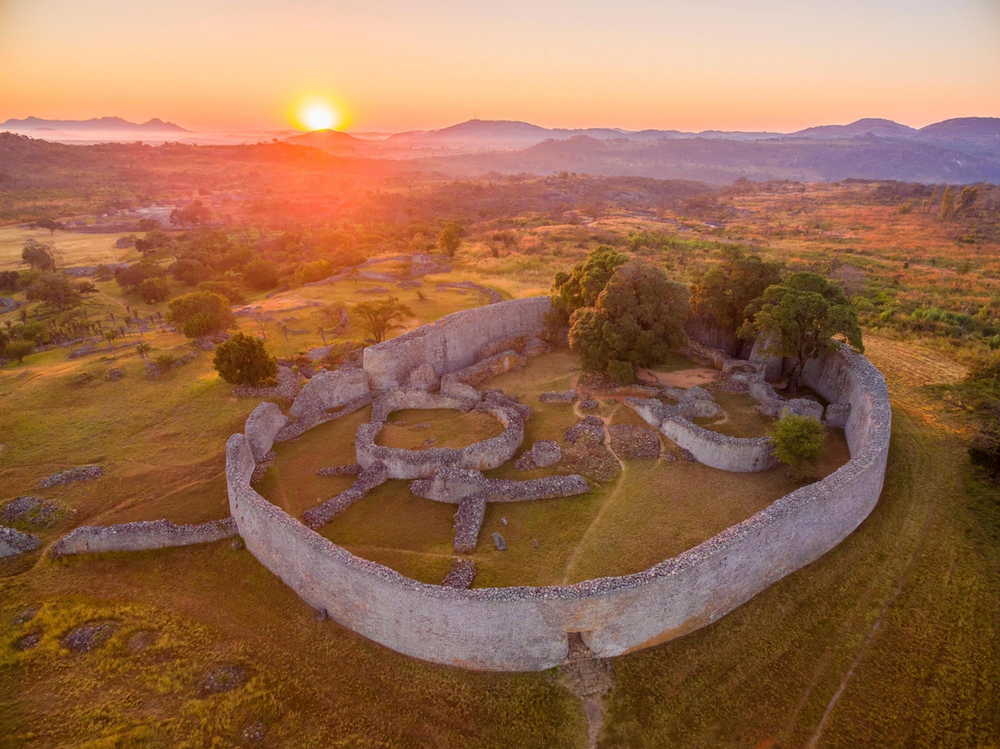
(Photo: National Geographic)
Great Zimbabwe consists of extensive stone ruins of an African Iron Age city, which once was the heart of a thriving trading empire from the 11th to the 15th centuries. It lies in southeastern Zimbabwe about 19 miles southeast of Masvingo. The ruins extend about 200 acres making it the largest of more than 150 ruins scattered across Zimbabwe and Mozambique. It is estimated that the ruins and the surrounding valley once supported a Shona population of 10,000 to 20,000. The ruins are divided into three main areas: the Hill Complex, the Great Enclosure, and the Valley Ruins. The word zimbabwe, is a Shona (Bantu) word which means “stone houses.” In the late 19th century many soapstone figurines in the shape of a bird were discovered, and this Zimbabwe Bird came to be the national symbol for the country, incorporated into the national flag and displayed in places of high honor. Great Zimbabwe became a national monument and was designated a World Heritage site in 1986. When visiting the great site, allow enough time to explore the ruins. A full day is recommended to explore the three main points of interest: the Hill Complex, the Great Enclosure, and the museum.
2. Meroe
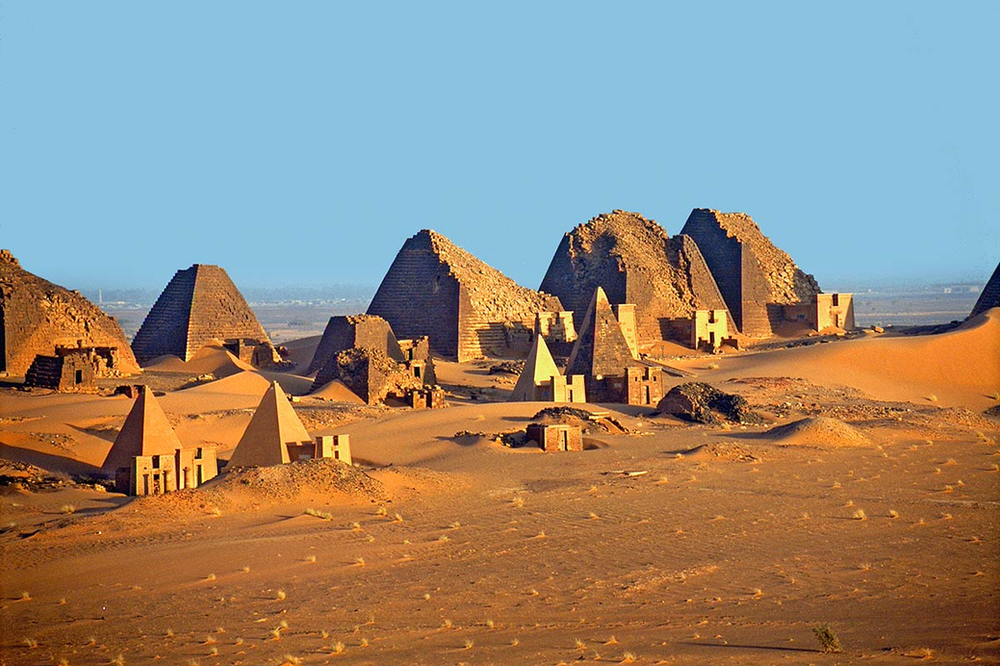
(Photo: Sacred Sites)
Meroe was once the wealthy capital of the Kingdom of Kush which is modern day Sudan, and stands as the most extensive archaeological site in the country. Located about 155 miles northeast of Khartoum, the ruins of pyramids, palaces, and official buildings remain where a populous city once lived. In the desert of eastern Sudan lies almost 200 ancient pyramids, many of them tombs of the kings and queens of the Meroitic Kingdom which ruled for more than 900 years. The Meroe pyramids, smaller than their Egyptian counterparts, are considered to be Nubian pyramids with narrow bases and steep angles on the sides. The pyramids, built between 2,700 and 2,300 years ago contain decorative elements from the cultures of Pharaonic Egypt, Greece, and Rome. The oldest tomb discovered reveals there was a settlement at Meroe as early as 890 BCE. The city thrived until its decline in 330 CE after it was sacked by an Aksumite king. Meroe is listed by UNESCO as a World Heritage site. The Meroe pyramids are largely overshadowed by Egypt’s famous pyramids and thus remain a hidden treasure.
3. Lalibela
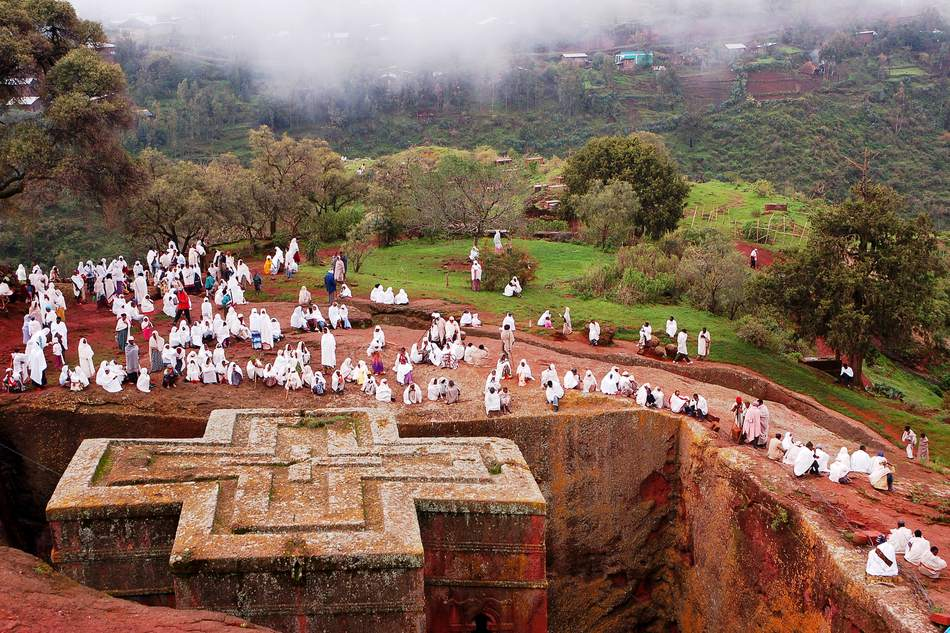
(Photo: Jon Bratt/Getty Images)
Lalibela consists of 11 medieval monolithic churches situated in the mountainous region in the heart of Ethiopia. The churches, designated a UNESCO World Heritage site, were carved out of solid rock below ground level in varying styles. The block of rock was carved from the top down both externally and internally, creating doors, windows, columns, various floors, and intricate designs. The construction of Lalibela is credited to King Lalibela who set out to construct a “New Jerusalem” after Muslim conquests halted Christian pilgrimages to the Holy Land. It flourished after the decline of the Aksum Empire. Biete Medhani Alem is believed to be the largest monolithic church in the world, while Biete Giorgis is famously known for its cruciform plan. Near the churches the town of Lalibela has two story round houses constructed of a local red stone, and known as the Lasta Tukuls. Lalibela is a high place of Ethiopian Christianity and has been a place of pilgrimage and focus since the 12th century.
4. Timbuktu

Timbuktu, a city in the western African country of Mali, was a historically important trading post on the trans-Saharan caravan route and was a center of Islamic culture. It is located about 8 miles north of the Niger River on the southern edge of the Sahara. Timbuktu served as a center of Islamic scholarship under many African empires. It was home to a 25,000 student university and other madrasahs that served as the foundation for the spread of Islam throughout Africa from the 13th to the 16th centuries. Many sacred Muslim texts were carried great distances to the city for the use of prominent scholars from Cairo, Baghdad, Persia, and elsewhere who resided in Timbuktu. The teachings of Islam from astronomy and mathematics to medicine and law were collected and produced here in the form of several hundred thousand manuscripts. Many of them still remain but in perilous condition, to form a valuable written record of African history. Timbuktu’s former status as an Islamic center is seen in its three great mud and timber mosques: Djingareyber, Sankore, and Sidi Yahia which recall the city’s golden age. The places of worship, built in the 14th and 15th centuries, were also the homes of Islamic scholars known as the Ambassadors of Peace. Timbuktu was designated a UNESCO World Heritage Site in 1988.
5. Elmina Castle
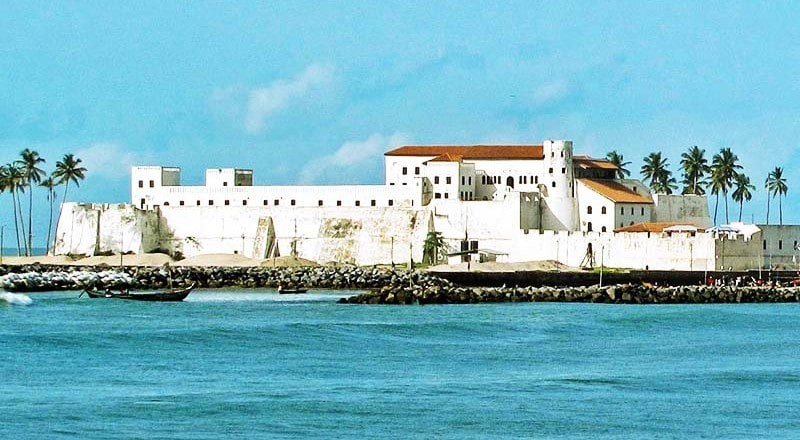
(Photo: Visit Ghana)
Elmina Castle, located on the western coast of present-day Ghana, was the first European slave-trading post in all of sub-Saharan Africa built in 1482 by Portuguese traders. Its original intention was to protect the gold trade, but upon its capture by the Dutch in 1637 it was used to serve the Dutch slave trade with Brazil and the Caribbean. The castle later came under British ownership in the 1800s. Elmina, similarly to other West African slave fortresses, housed luxury suites for the Europeans in the upper levels, while simultaneously housing slaves in the cramped and filthy dungeons below them. Each cell often housed up to 200 people at a time, lacking the space to even lie down. The floor of the dungeon is now several inches higher than when it was originally built due to centuries of impacted filth and human excrement. At the seaboard side of the castle was the Door of No Return, the infamous portal through which salves would board the ships that would take them on the deadly journey across the Atlantic known as the Middle Passage. By the 18th century, 30,000 slaves passed through the Door of No Return each year headed to North and South America. Elmina is preserved as a Ghanaian national museum and monument and has been designated a World Heritage Monument by UNESCO.
6. Robben Island
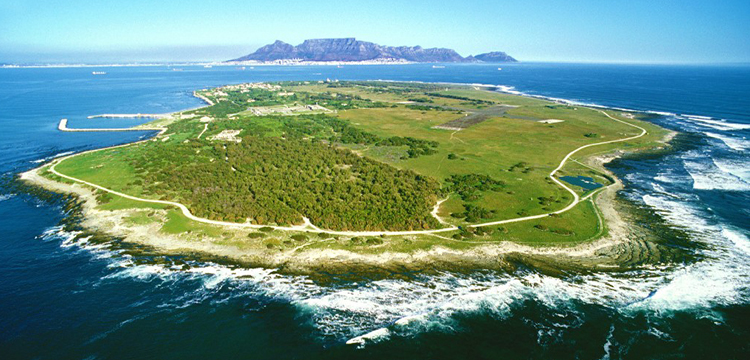
(Photo: Discover South Africa)
Robben Island is a small island in South Africa’s Table Bay in Capet Town. The island was formerly used as a place of imprisonment, banishment, and isolation for about four centuries. However it is notoriously known for housing South Africa’s anti-apartheid activists such as former President Nelson Mandela. Prior to this, the island was home to a variety of wildlife species. The island’s name Robben is Dutch and means seal, reflecting the many seals the island housed. In 1671, the Dutch began to use the island as a prison, and asylum for the mentally ill, and a military hub. It housed criminals and mentally ill patients, including social outcasts and those who disagreed with Dutch rule. The island was declared a World Heritage Site by UNESCO because it serves as a reminder of the country’s history and the triumph of the human spirit against injustice and apartheid.
Powered by WPeMatico


